
- Share via
BISHOP, Calif. — Although a state of emergency remains in effect throughout much of the Eastern Sierra Nevada — a region where epic snowpack had threatened to unleash catastrophic flooding on small valley towns — local officials and the Los Angeles Department of Water and Power are finally breathing a collective sigh of relief: The worst days of the “Big Melt” are over, they say.
As rivers gorged with snowmelt begin to recede, and egrets glide over catch basins brimming with runoff, officials say that an aggressive and collaborative response — as well as a cooler-than-anticipated spring — helped them avoid massive community flooding and damage to the Los Angeles Aqueduct, the city’s century-old water lifeline.
While an armada of heavy equipment remains at the ready to shore up flooding infrastructure and clear debris, forecasters expect the region’s waterways to return to normal by next month.
“Fortunately, much of the region experienced a long cool spring and cooler-than-expected beginning of summer,” said aqueduct manager Adam Perez.
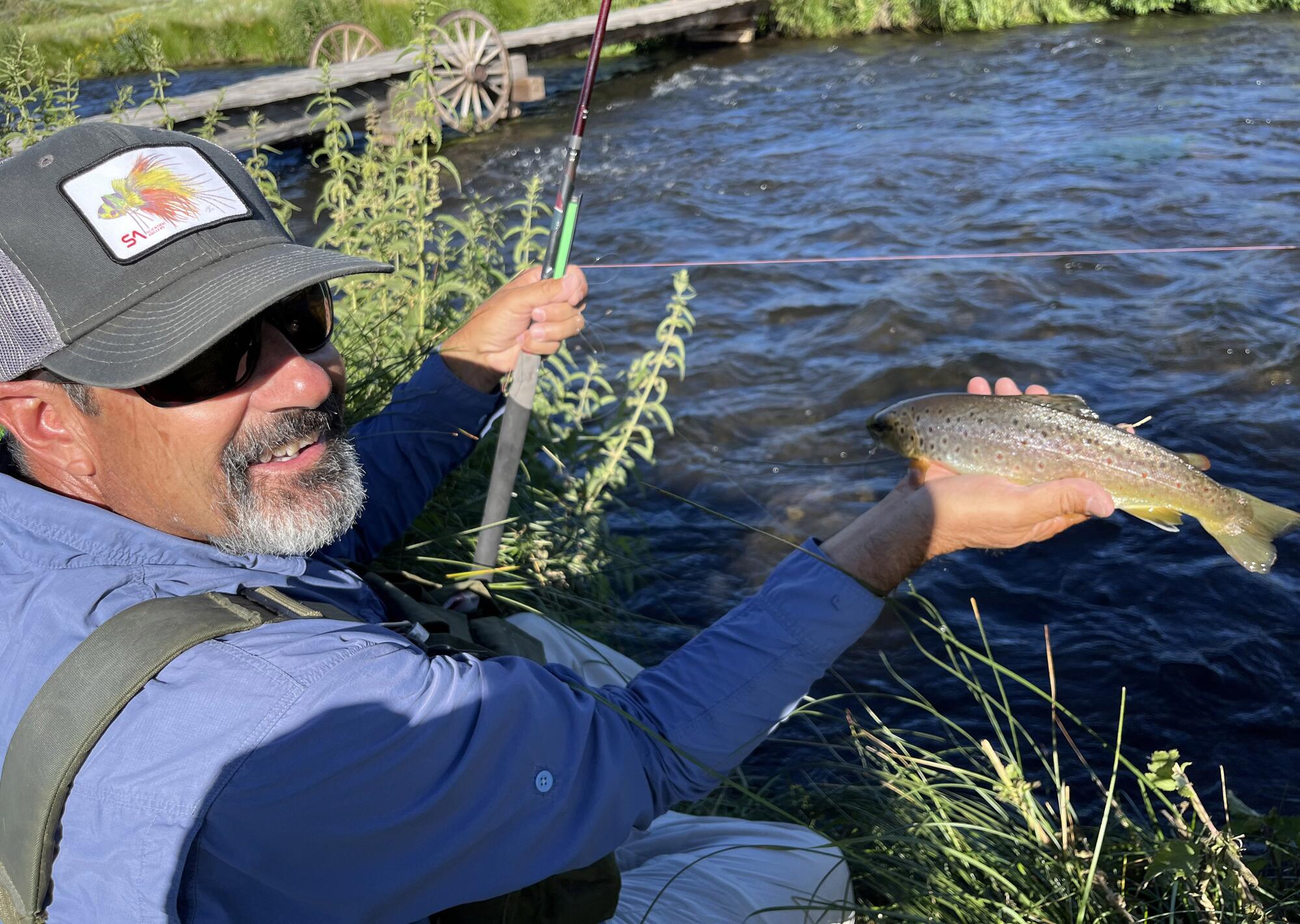
Overall, the flow of snowmelt streaming down the Sierra has been manageable, and has triggered only minor damage, he said.
The sense of relief is palpable among residents who vividly recall the intense flooding meted out by a series of atmospheric rivers last winter. The storms temporarily severed the aqueduct, wreaked havoc among valley communities and deposited immense quantities of snow in the jagged Sierra.
“Just a few months ago, the threat of massive flooding was coming at us like a freight train,” said Pat Jaeger as he fished for trout at Hot Creek Ranch in Mammoth Lakes recently. “But look at this place now — big water, great fishing, spectacular scenery.”
Squeezed between the jagged peaks of the Sierra Nevada and the less lofty White Mountains, the Owens Valley is dotted with towns such as Olancha, Lone Pine, Big Pine and Bishop. Their rustic charm inspires a sense among motorists traveling north along U.S. 395 that they are heading back in time.
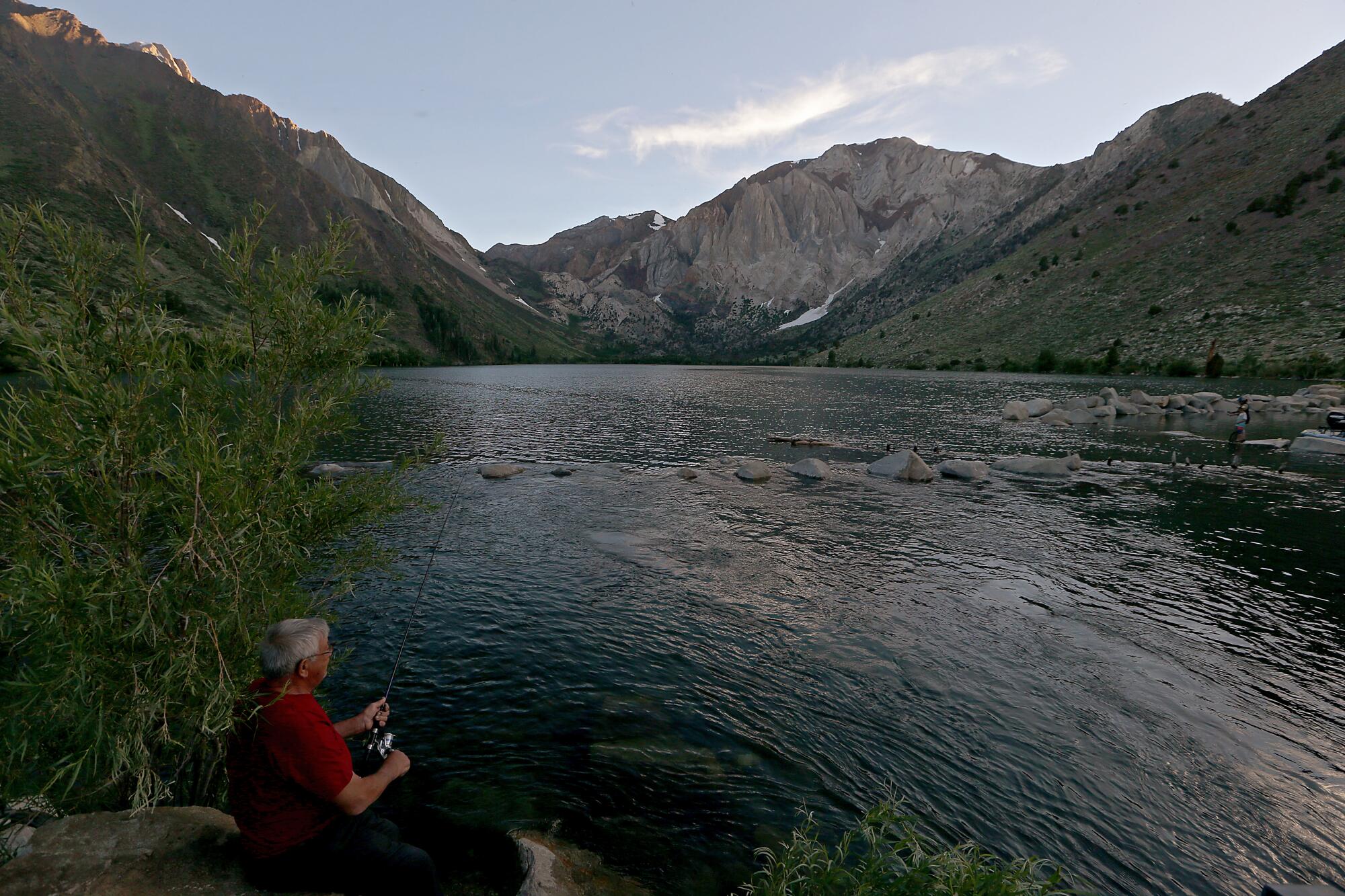
But the reality is this landscape of ancient lava flows, alfalfa fields, rust-streaked hills and cattle ranches is not immune to the effects of global warming and whiplash transitions from periods of intense dryness to flash flooding.
“Climate change is real,” said Anselmo Collins, senior assistant general manager of water systems at the DWP. “We now have to routinely prepare for the worst meteorological conditions imaginable in the course of a single year: severe drought and flooding.”
Now, even as communities throughout the state brace for another potentially wet winter brought on by El Niño, DWP crews continue to clean up after flooding incidents. Those projects include the removal of an estimated 300,000 cubic yards of debris and silt deposited on spreading grounds by floodwaters diverted from rivers, canals and reservoirs.
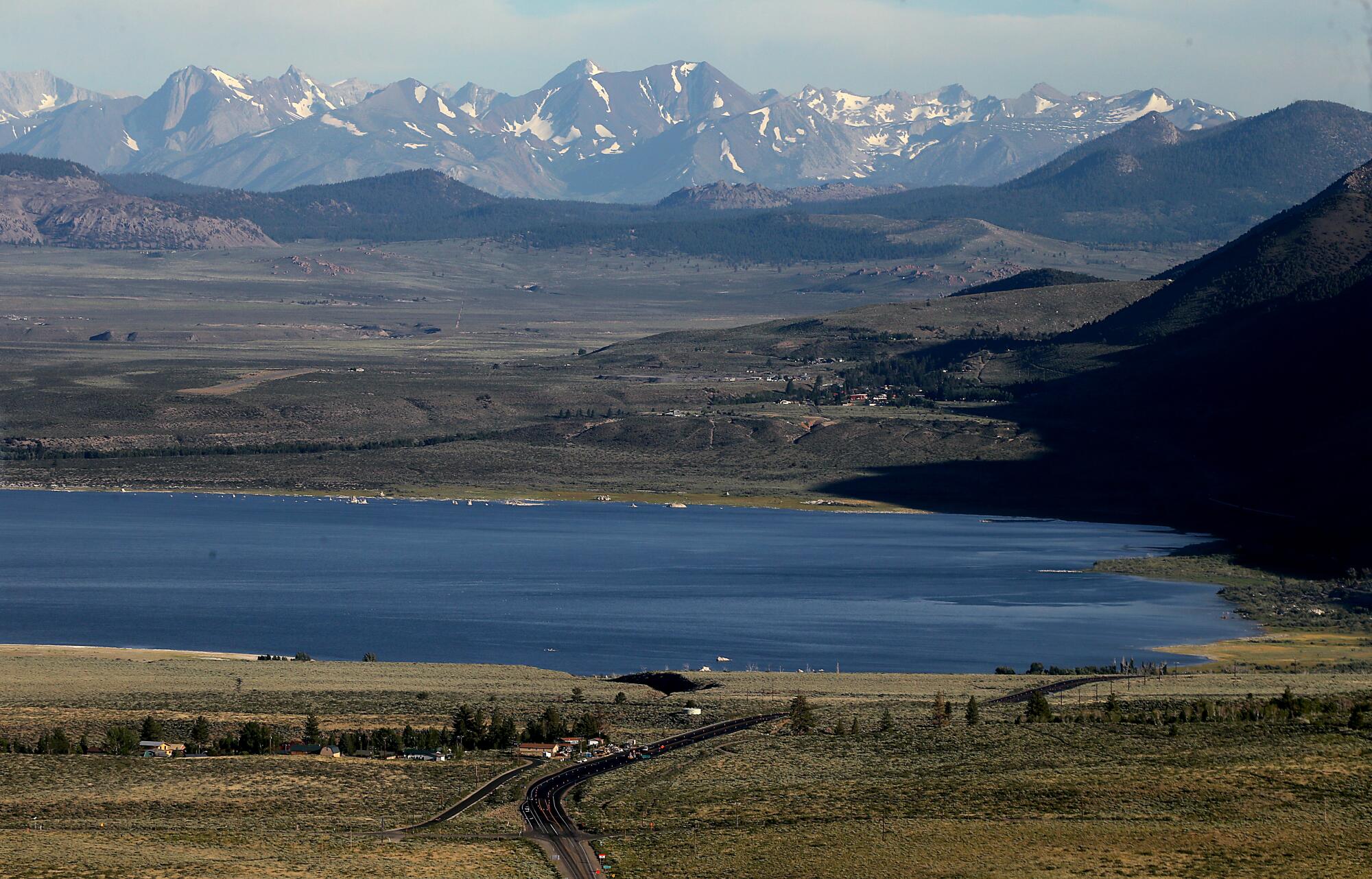
DWP crews in waders were also rescuing thousands of trout, carp, bass, bullfrogs, red-eared slider turtles, crayfish and other aquatic species stranded on the mud flats of rapidly evaporating catch basins.
“These creatures were inadvertently swept away by storm flows in emergency diversion systems,” said Frosty Mathieu, a construction and maintenance supervisor at the DWP, as he strode along a stretch of Bishop Creek swollen with snowmelt. “Under state law, we’re required to re-release them into the creeks and reservoirs they came from.”
As the cleanup draws to a close, Inyo County and the DWP are planning to help sponsor an “after the flood party” in September in Bishop.
The celebration will mark a rare moment of camaraderie between valley residents and the DWP, and speak to the magnitude of the trials and anxiety they suffered in common this year.
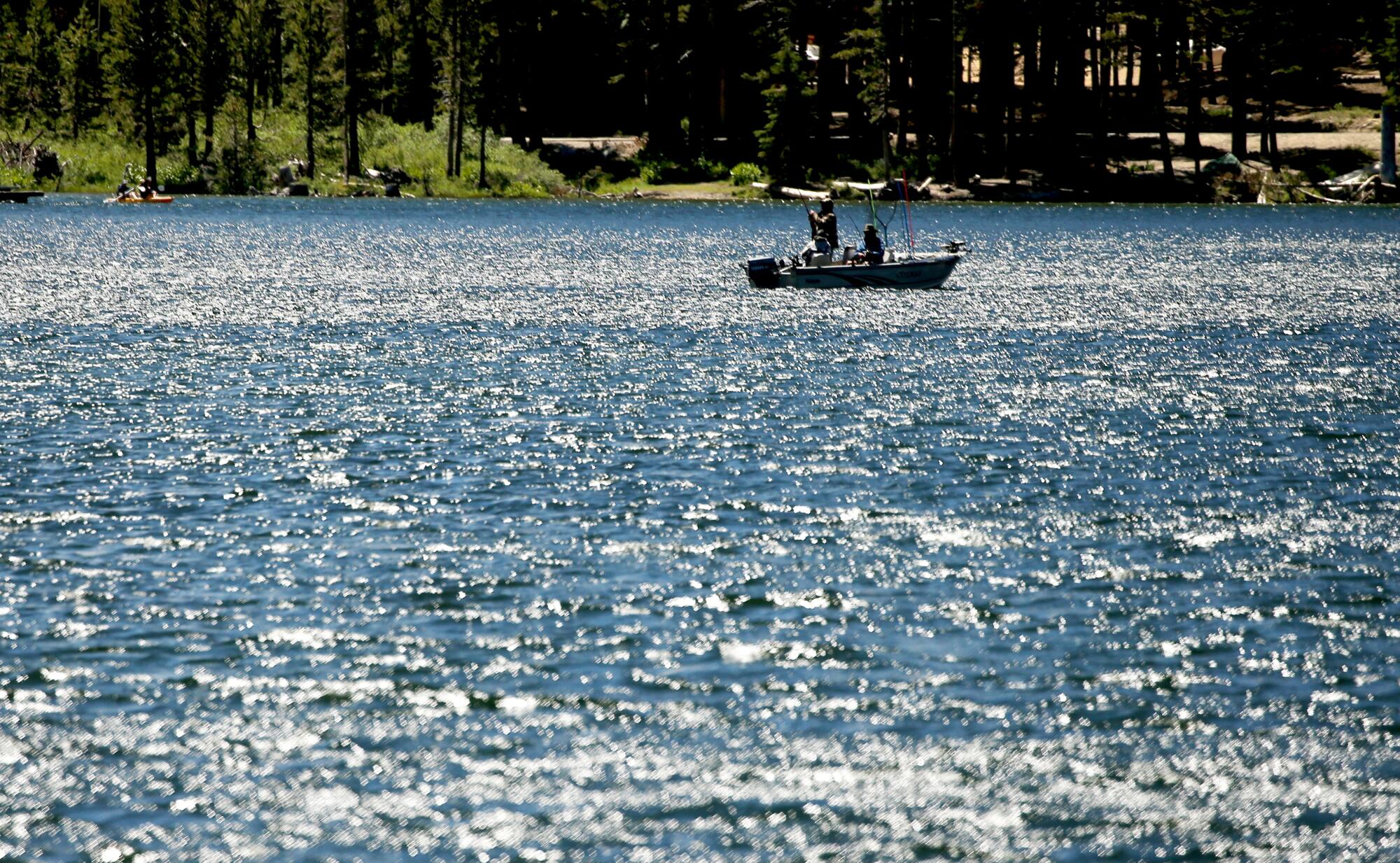
The Los Angeles Aqueduct is hard to spot amid the sage, but its effects are evident at dry Owens Lake, which was drained to slake Los Angeles’ thirst, and in scattered marshlands that have reverted to brush. A sympathetic newspaper once referred to the beast that stole the water as the “aqua duck.” It was bombed several times during the 1920s.
But the threat of catastrophic flooding bolstered a sense of community that Inyo County Emergency Services Manager Maekala Torres described as “a great collaboration.”
It began in January, when Perez, sounded an alarm: There were worrisome similarities between the wet and powerful storms clamping down on the mountains and archival reports and photographs of damage due to storms that pushed rainfall and snow levels in the region to historic levels in 1969.
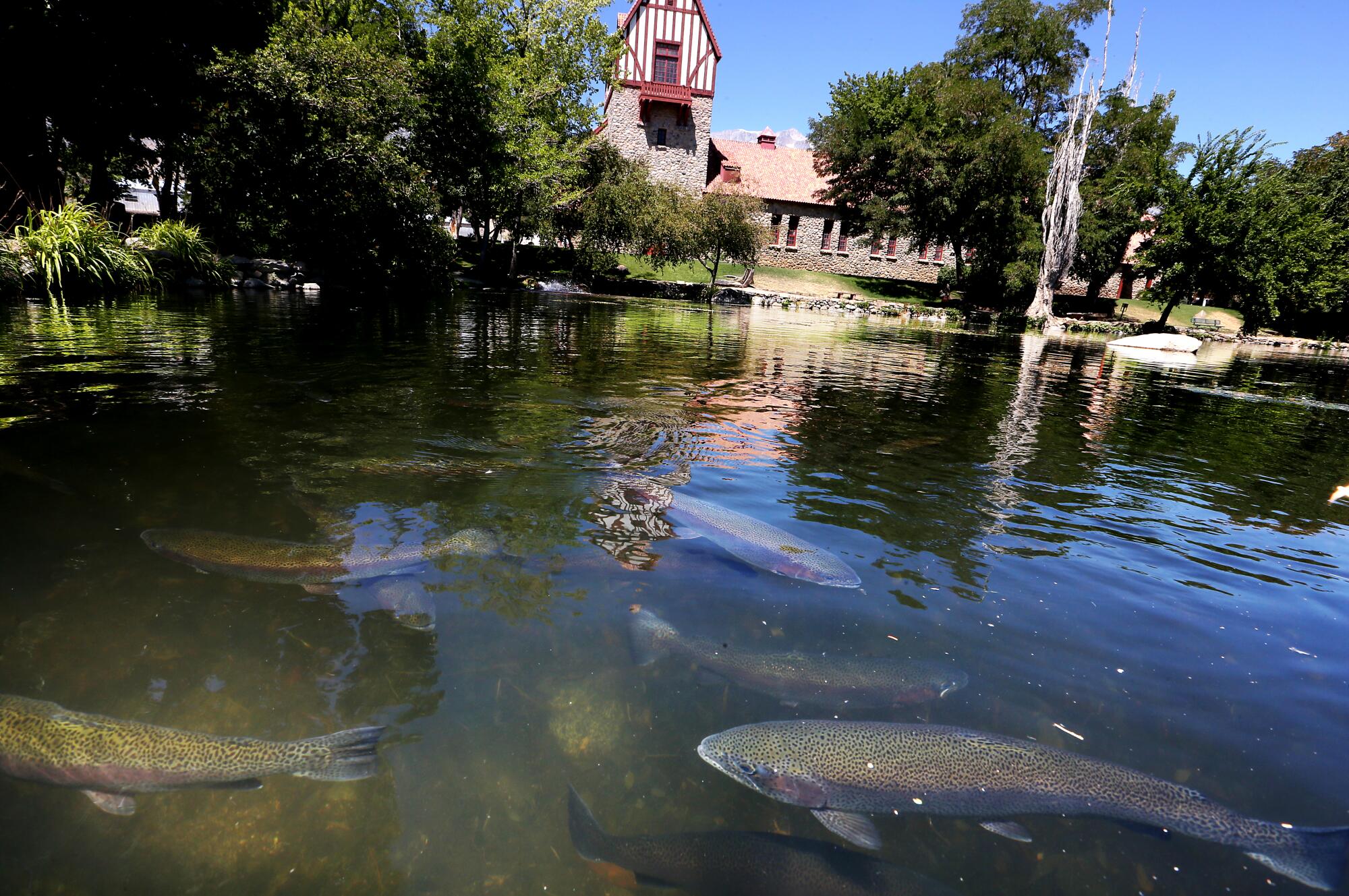
“I give credit to Perez, who called me one day in January to say we should prepare for a significant storm event,” recalled Nate Greenberg, Inyo County’s county administrative officer. “Suddenly, we were concerned about being cut off from Southern California.”
The warning triggered a detente in historic water wars that have boiled in Owens Valley since the early 1900s, when Los Angeles city agents posed as ranchers and farmers to buy land and water rights in the valley. Their goal was to build an aqueduct that would help transform Los Angeles into a metropolis.
Los Angeles, Inyo County, Mono County, Caltrans, Cal Fire, Southern California Edison, federal land managers, law enforcement agencies, hospital officials, Native American tribes and avalanche experts began preparing for a worst-case scenario: rivers rising to flood levels as warm spring rains stripped the snowpack off the mountains.
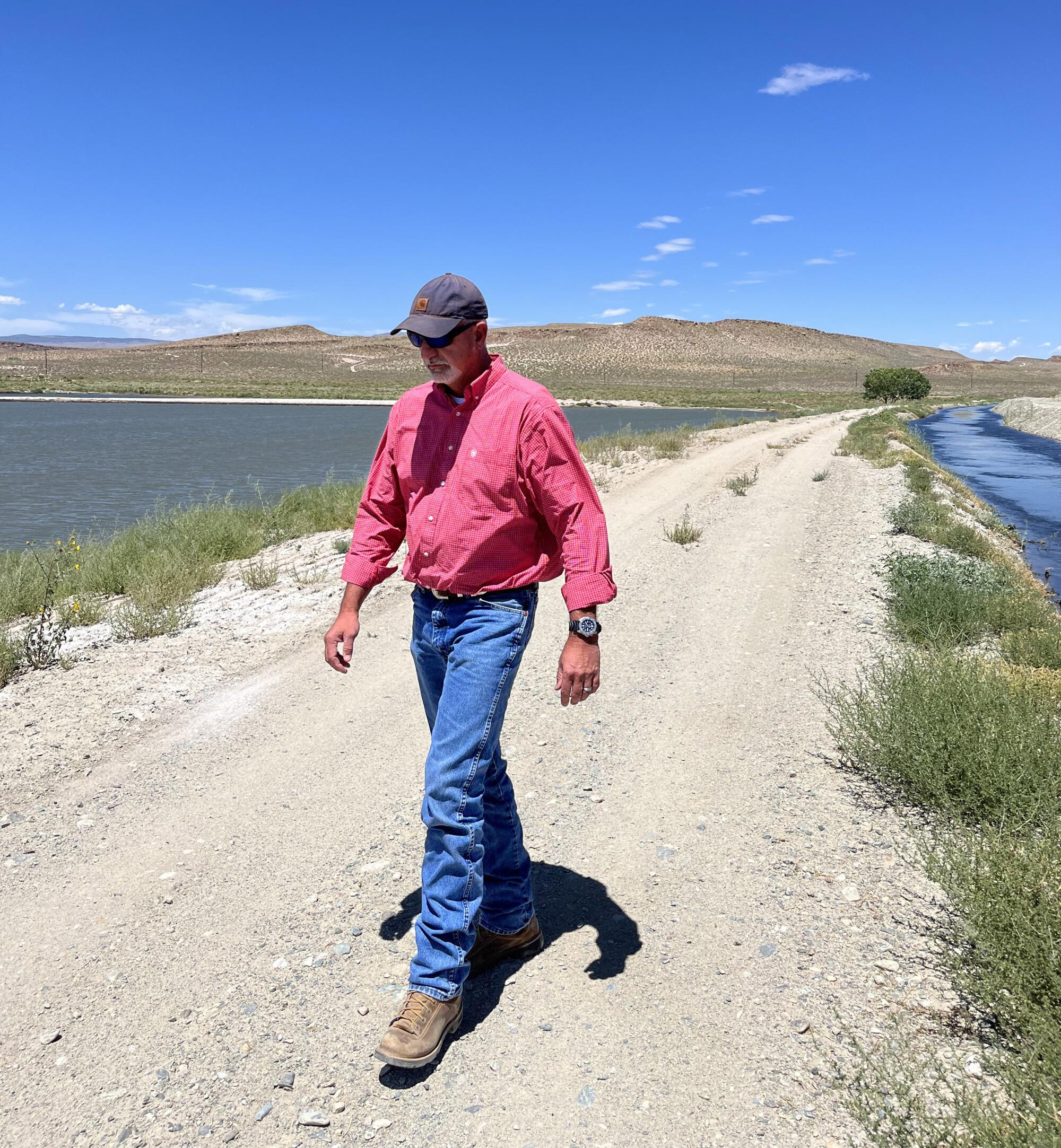
“Conversations on the table focused on a lot of pressing questions,” Greenberg recalled. “Were helicopters available to transport critical patients to hospitals and bring in medical supplies? Do we have enough fuel and food on hand to sustain isolated communities for several days, or longer, if highways and mountain passes were closed?”
Crews with shovels and chain saws cleared culverts and roads. The DWP reinforced ditches and stream banks with rocks and boulders, and used bulldozers to build up new berms to protect the lattice of plumbing and acres of gravel beds it built as part of its $2-billion dust-control project on dry Owens Lake.
“Relations haven’t always been good in the Eastern Sierra Nevada,” Collins said. “But when faced with a winter like no other, everybody stepped up to the plate.”










